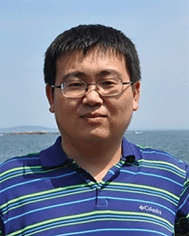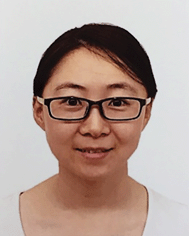Horizons Community Board collection – emerging 2D materials for energy and electronics applications
Li
Li
*a,
Tianyi
Ma
 *b and
Nan
Zhang
*b and
Nan
Zhang
 *c
*c
aGlobalFoundries, USA. E-mail: li.li1@globalfoundries.com
bUniversity of Newcastle, New South Wales, Australia. E-mail: Tianyi.Ma@newcastle.edu.au
cCollege of Materials Science and Engineering, Hunan University, China. E-mail: nanzhang@hnu.edu.cn
Materials Horizons and Nanoscale Horizons set up their Community Boards several years ago, aiming to support early career researchers so that they can share their experiences and ideas on scientific publishing. As future leaders in their respective fields, the Community Boards also provide a channel for members to build relationships across their research community and develop their own editorial skills.
We are delighted to continue our series of post-publication online article collections, led by our Community Board members across both Materials Horizons and Nanoscale Horizons.
Working together and sharing their unique areas of expertise, our Community Board members have recommended several key topics where significant, rapid progress has been made in the last 2 years. They have selected top articles published in the Horizons journals to showcase the most important advances in each topic area.
Emerging 2D materials
Li Li, Tianyi Ma, and Nan Zhang present the second Horizons Community Board collection on emerging 2D materials for energy and electronics applications.Read the collection here.
2D nanomaterials, including carbon-based materials, metals, metal oxides (and sulfides), black phosphorus (BP), etc., have aroused extensive interest in energy and electronics applications due to their attractive structure-dependent properties. In this themed collection, we are compiling some noteworthy articles focused on sensors, lithium-ion batteries, supercapacitors, photo(electro)catalysis, photodetectors, electronics and optoelectronics. As typical 2D carbon materials, graphene and doped graphene exhibit high performances in these fields, as indicated by Li et al. (DOI: 10.1039/C6MH00587J) and Chua et al. (DOI: 10.1039/C7MH00068E) in their research works published in Materials Horizons. 2D metal and metal sulfide materials, as illustrated through the research works of Chen et al. (DOI: 10.1039/C7NH00091J) and Li et al. (DOI: 10.1039/C8NH00419F), have shown two-dimensional geometric structures together with unique physical properties, which make the materials quite promising candidates for applications in electronics and optoelectronics. Lou et al. (DOI: 10.1039/C3MH00077J) provided an effective approach for growth of SnO2 nanosheets on various conductive substrates to increase the energy density of the integrated electrodes. A review article about 2D BP published by Zhou et al. (DOI: 10.1039/C7MH00543A) summarized the recent developments in the study of BP – it covered the state-of-the-art synthesis methods for preparing single-layer or few-layer BP, the recent advances in characterizing its electronic, optical and mechanical properties, and the reported functional devices utilizing such properties. Since these research works show that these emerging 2D materials have excellent performances and prospects, it will be important to see how they enrich the future of energy and electronics applications. We hope that readers will obtain valuable information from this themed collection.
| This journal is © The Royal Society of Chemistry 2019 |



